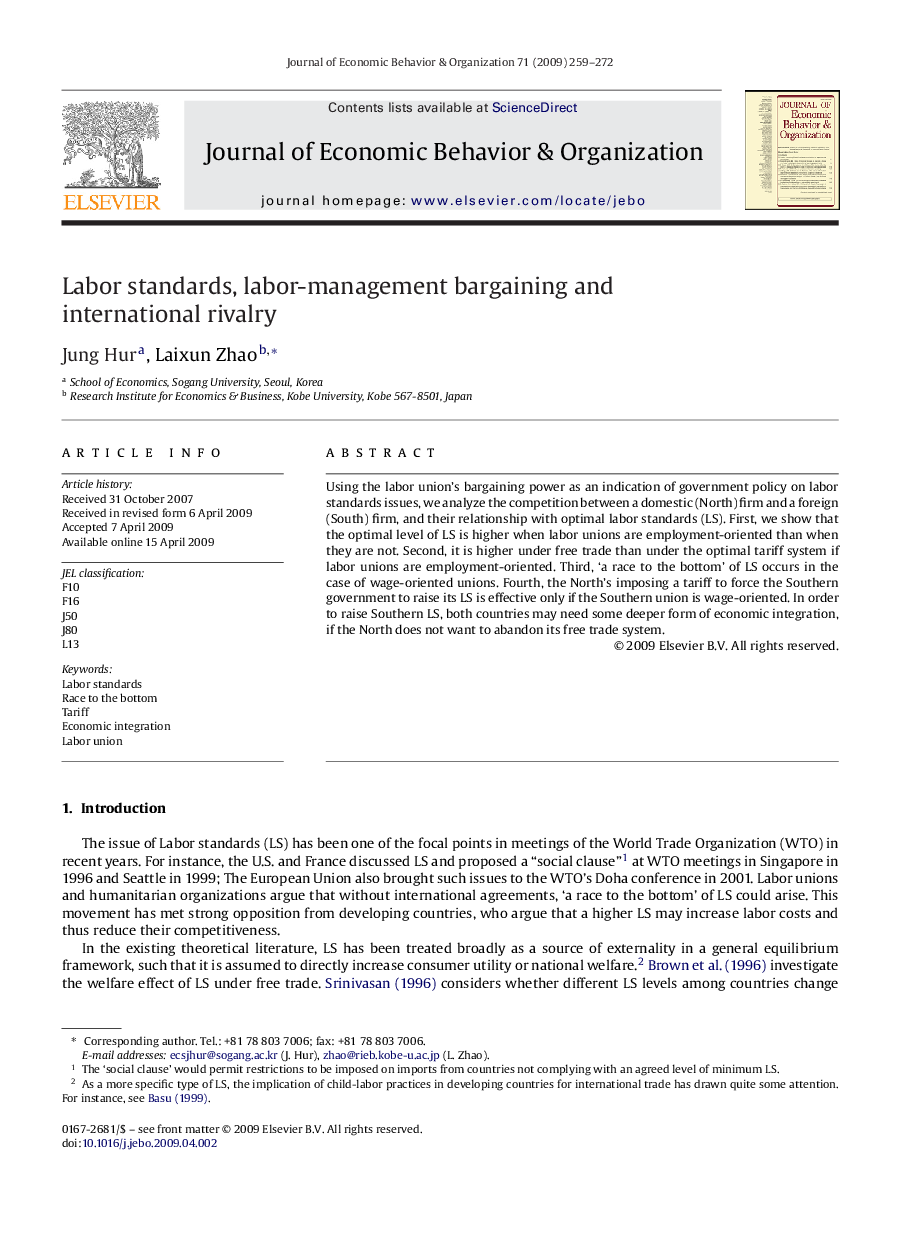| Article ID | Journal | Published Year | Pages | File Type |
|---|---|---|---|---|
| 884258 | Journal of Economic Behavior & Organization | 2009 | 14 Pages |
Using the labor union's bargaining power as an indication of government policy on labor standards issues, we analyze the competition between a domestic (North) firm and a foreign (South) firm, and their relationship with optimal labor standards (LS). First, we show that the optimal level of LS is higher when labor unions are employment-oriented than when they are not. Second, it is higher under free trade than under the optimal tariff system if labor unions are employment-oriented. Third, ‘a race to the bottom’ of LS occurs in the case of wage-oriented unions. Fourth, the North's imposing a tariff to force the Southern government to raise its LS is effective only if the Southern union is wage-oriented. In order to raise Southern LS, both countries may need some deeper form of economic integration, if the North does not want to abandon its free trade system.
